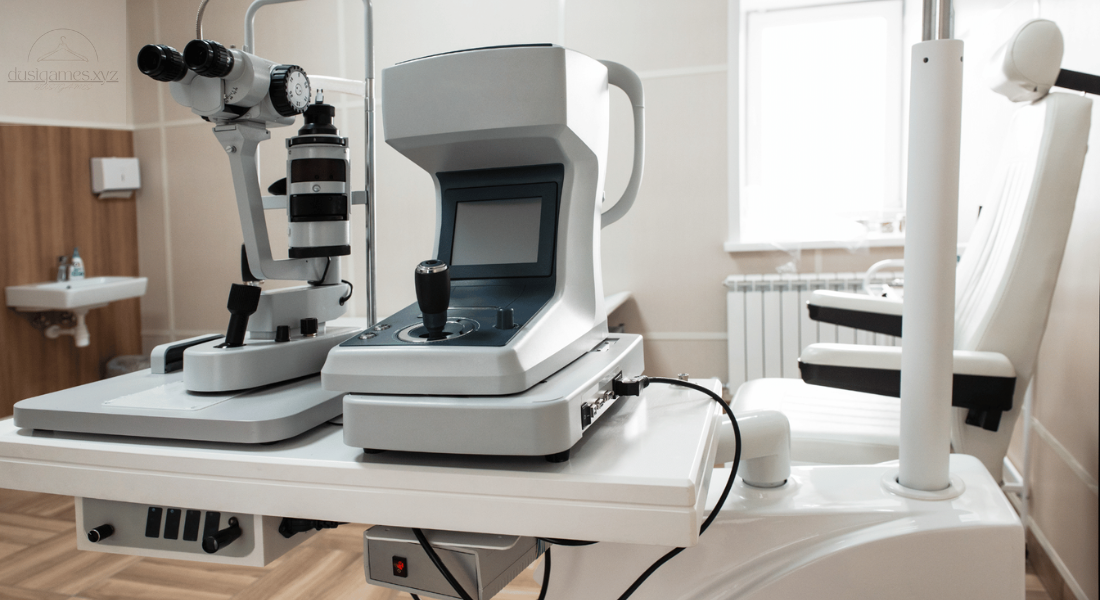Blog
The Power of Premium Diagnostic Tools for Industry Revolutionizing Efficiency
Premium diagnostic tools for industry are at the forefront of this revolution, offering unparalleled accuracy and efficiency. These tools have become indispensable in identifying issues, preventing downtime, and maximizing productivity. This article dives into the significance of these tools and explores how they are transforming industries across the globe.
Why Premium Diagnostic Tools Are Essential in Industry
Maximizing Operational Efficiency
The first and most important advantage of using premium diagnostic tools is their ability to maximize operational efficiency. These tools allow businesses to identify potential problems in machinery and equipment before they become costly issues. By offering detailed insights and real-time monitoring, industries can make timely interventions, ensuring that operations continue smoothly without unexpected interruptions.
Minimizing Downtime and Preventing Failures
Another crucial benefit of premium diagnostic tools is their role in minimizing downtime. Unexpected failures in machinery can lead to halted production and significant financial losses. Diagnostic tools help in the early detection of faults, allowing businesses to perform maintenance or repairs proactively. This predictive capability reduces the risk of unplanned outages, keeping the industry running at peak performance.
Ensuring Long-Term Reliability
Long-term reliability is a major concern for industries with expensive machinery and complex systems. Premium diagnostic tools help to maintain this reliability by constantly monitoring equipment performance. They provide valuable data that can be used for routine maintenance or even to adjust systems for optimal functioning, thereby extending the lifespan of equipment and reducing replacement costs.
Key Features of Premium Diagnostic Tools
Real-Time Data Collection and Analysis
One of the standout features of premium diagnostic tools is their ability to collect and analyze data in real time. These tools are equipped with advanced sensors that continuously monitor the condition of equipment, machinery, and other vital systems. The ability to access real-time data allows industries to respond instantly to issues, ensuring that they don’t escalate into larger problems.
Precision and Accuracy
When it comes to diagnosing problems in industrial systems, accuracy is paramount. Premium diagnostic tools are designed to provide precise measurements and insights, making them highly reliable. These tools can detect even the smallest issues that might go unnoticed with traditional inspection methods, allowing for more accurate troubleshooting and faster resolutions.
User-Friendly Interfaces
Premium diagnostic tools are designed with user experience in mind. Many of these tools feature intuitive, easy-to-use interfaces that allow operators to access critical data without technical expertise. This simplicity ensures that diagnostic tasks can be carried out swiftly, even by personnel without advanced technical training, contributing to faster decision-making and more efficient workflows.
Wireless Connectivity for Remote Access
The integration of wireless connectivity in premium diagnostic tools adds another layer of convenience. Operators and engineers can access the diagnostic data remotely, allowing them to troubleshoot or monitor equipment performance from virtually anywhere. This feature is especially beneficial in industries with large or multiple facilities, where travel time can hinder prompt interventions.
Benefits of Premium Diagnostic Tools for Industry
Cost-Effective Maintenance
Implementing premium diagnostic tools can lead to substantial cost savings in the long run. By catching issues early and streamlining maintenance schedules, industries can avoid expensive repairs and equipment failures. Preventive maintenance driven by insights from diagnostic tools is far more cost-effective than waiting for machinery to break down.
Improved Decision Making
Access to accurate and timely data enhances decision-making in industries. With detailed diagnostic reports, operators and managers can make informed choices about equipment maintenance, replacement, and upgrades. These tools provide a comprehensive view of machine health, which supports better strategic decisions and improves overall operations.
Enhanced Safety Standards
Safety is a top priority in industrial environments, and premium diagnostic tools contribute significantly to improving workplace safety. By constantly monitoring equipment performance and identifying potential risks, these tools help ensure that machines operate within safe parameters. This predictive monitoring reduces the likelihood of accidents caused by equipment failure, safeguarding workers and facilities alike.

Industries That Benefit from Premium Diagnostic Tools
Automotive Manufacturing
In automotive manufacturing, precision is critical, and any malfunction in the production line can result in significant losses. Premium diagnostic tools help monitor the performance of robots, conveyors, and assembly systems. These tools ensure the accuracy of parts and the efficiency of production, preventing delays and maintaining high-quality standards.
Aerospace and Defense
The aerospace and defense industries rely heavily on complex systems and machinery, where even a minor fault can have catastrophic consequences. Diagnostic tools are essential for monitoring aircraft engines, avionics, and defense equipment. These tools provide detailed analyses that enable timely repairs and upgrades, ensuring the safety and reliability of critical systems.
Energy and Utilities
In the energy and utilities sector, machinery and equipment operate under extreme conditions. Premium diagnostic tools allow for constant monitoring of turbines, generators, and distribution systems. By analyzing performance data, these tools help optimize energy production and distribution while minimizing downtime and maintenance costs.
Manufacturing and Industrial Production
Manufacturing plants that use heavy machinery and automated systems benefit greatly from premium diagnostic tools. These tools provide valuable data on machine health, allowing operators to detect problems before they affect production. With the ability to monitor multiple machines simultaneously, diagnostic tools streamline operations and boost productivity.
Oil and Gas
In the oil and gas industry, equipment failure can lead to substantial financial losses and environmental damage. Premium diagnostic tools are used to monitor drilling equipment, pipelines, and offshore platforms, ensuring that they operate efficiently and safely. These tools help companies predict failures, perform maintenance, and avoid costly disruptions.
Advanced Technologies Behind Premium Diagnostic Tools
Artificial Intelligence and Machine Learning
Artificial intelligence (AI) and machine learning (ML) are increasingly being integrated into premium diagnostic tools for industries. These technologies analyze vast amounts of data to identify patterns and predict equipment failures. AI-powered diagnostic tools can offer advanced insights, enabling industries to make proactive decisions and improve operational efficiency.
IoT Integration for Smart Monitoring
The Internet of Things (IoT) is transforming the way industries monitor their equipment. With IoT-enabled diagnostic tools, machines and sensors communicate with each other to share performance data in real-time. This connectivity allows for advanced predictive maintenance and enables companies to perform remote monitoring and troubleshooting, further enhancing operational efficiency.
Cloud Computing for Data Storage and Access
Cloud computing is another important feature of premium diagnostic tools. These tools can store vast amounts of diagnostic data securely in the cloud, making it accessible to engineers and managers anywhere in the world. Cloud-based diagnostic tools offer real-time access to performance data, analysis reports, and maintenance schedules, enabling teams to collaborate seamlessly and respond faster to potential issues.
Blockchain Technology for Data Integrity
With the growing need for secure and transparent data in industries, blockchain technology is being integrated into diagnostic tools. Blockchain ensures that the data collected from machines is tamper-proof, providing a reliable record of equipment performance. This technology helps companies track maintenance histories, validate reports, and ensure the integrity of their diagnostic processes.
Challenges in Implementing Premium Diagnostic Tools
Initial Investment and Implementation Costs
The adoption of premium diagnostic tools requires significant upfront investment. While the long-term benefits often outweigh the costs, the initial expenses can be a hurdle for small businesses or companies operating on tight budgets. However, financing options and subscription-based models are making it easier for industries to access these advanced tools.
Integration with Legacy Systems
Many industries still rely on legacy systems that may not be compatible with modern diagnostic tools. Integrating premium diagnostic tools with existing machinery and software can be challenging. However, with the right implementation plan, these tools can be gradually incorporated into older systems, ensuring a smooth transition and minimal disruption.
Training and Skill Development
To fully capitalize on the benefits of premium diagnostic tools, companies must invest in training their workforce. The complexity of advanced tools means that workers need to develop new skills to operate and interpret diagnostic data effectively. Offering comprehensive training programs ensures that employees can make the most of these tools and improve overall productivity.
Conclusion: Transforming Industries with Premium Diagnostic Tools
Premium diagnostic tools for industry are not just a luxury—they are essential for optimizing performance, enhancing safety, and driving innovation. These tools offer invaluable insights that enable businesses to make informed decisions, prevent costly breakdowns, and extend the lifespan of equipment.
As industries continue to evolve, the integration of advanced diagnostic technologies will play a crucial role in shaping the future of manufacturing and production. By adopting these tools, companies can stay ahead of the curve, improve operational efficiency, and create a more reliable, safe, and cost-effective working environment.

